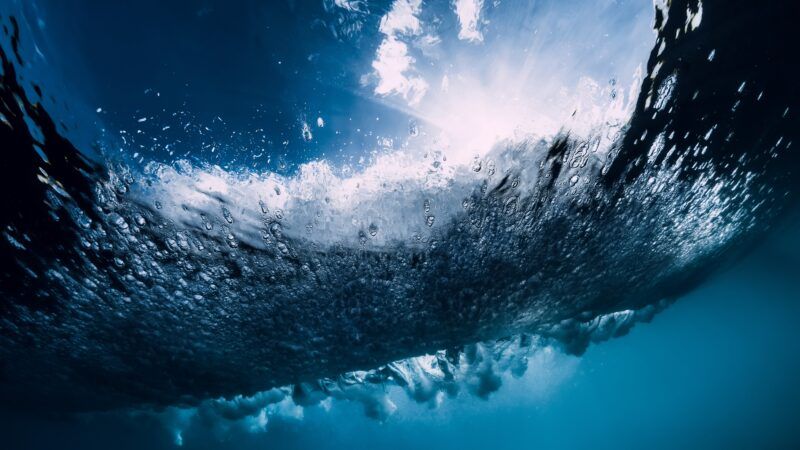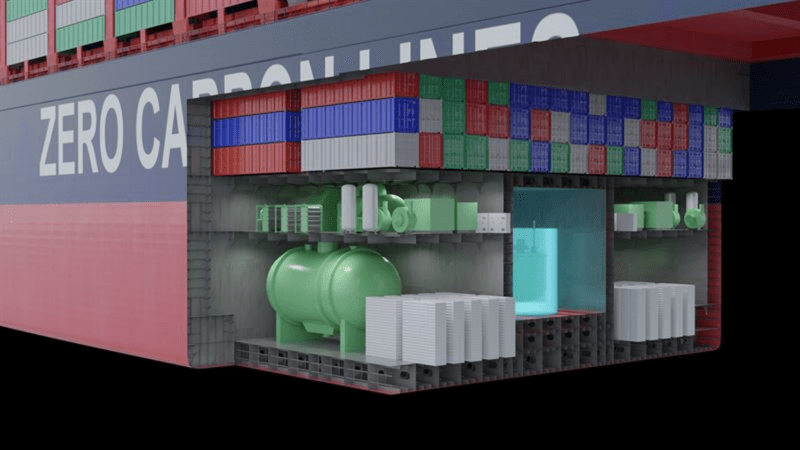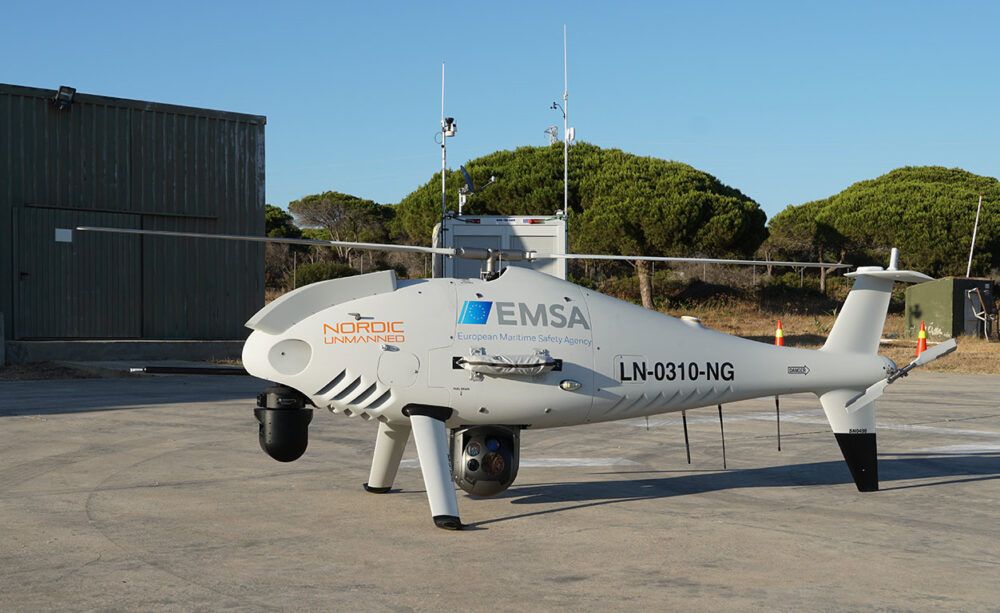 The drone that flies over the Strait to monitor pollution from ships is a Schiebel CAMCOPTER® S100, equipped with cameras and gas sensors. (EMSA)
The drone that flies over the Strait to monitor pollution from ships is a Schiebel CAMCOPTER® S100, equipped with cameras and gas sensors. (EMSA)
A drone to monitor ship pollution in the Strait of Gibraltar
For the second consecutive year, the European Maritime Safety Agency’s drone has returned to the Strait of Gibraltar to monitor pollutant emissions from ships and to provide support in case of maritime emergencies, such as accidents and spills.
 The drone that flies over the Strait to monitor pollution from ships is a Schiebel CAMCOPTER® S100, equipped with cameras and gas sensors. (EMSA)
The drone that flies over the Strait to monitor pollution from ships is a Schiebel CAMCOPTER® S100, equipped with cameras and gas sensors. (EMSA)
The use of this type of drone opens the door to new ways of controlling pollution and the impact of maritime transport on the oceans. In fact, although it is not currently possible for technical reasons, the Spanish Ministry of Transport, Mobility and Urban Agenda is working on the possibility of using this drone to monitor fuel spills such as that of the OS35, the vessel recently stranded in Gibraltar.
Control for the Strait of Gibraltar
Since last July and for the second consecutive summer, the European Maritime Safety Agency (EMSA) has begun operating a remotely piloted aircraft in the waters of the Strait of Gibraltar. The main objective is to monitor sulphur and nitrogen emissions from ships crossing the Strait to ensure compliance with pollution regulations.
The data obtained by this craft is used by the Spanish Ministry of Transport, Mobility and Urban Agenda. "The drone is very useful for us to check that ship emissions are below the limits set by international regulations," explains Federico Navarro Cabrera, head of service at the Sub-directorate General of Maritime Safety, Pollution and Inspection.
"Normally, this control is done at ports through inspections and analysis of fuel samples. Thanks to the drone, we go ahead and notify the port of destination that a certain ship is suspected of exceeding the permitted levels," he says.
When the ship arrives at its destination, the Maritime Authority must confirm the violation through the usual procedures, as the drone measurement is not yet legally valid. "In order for it to be, it is necessary to adapt the legislation to international or European level," adds Navarro.
With these monitoring actions, it is hoped that control mechanisms will be strengthened in preparation for the approval of the sulphur emission control area in the Mediterranean Sea by the International Maritime Organisation (expected to come into force in 2025). In addition, this year the drone is also expected to serve as a support technology for Maritime Rescue work.
Technology to control the spill of the OS35
The drone that flies over the Strait to monitor pollution from ships is a Schiebel CAMCOPTER® S100, equipped with cameras and gas sensors. It has a wingspan of more than three metres, can fly for more than six hours and reaches an altitude of 3650 metres.
"Many people associate drones with electric devices, but this one uses aviation fuel. It is a large helicopter with a range of up to 100 kilometres. All these characteristics would have allowed us, for example, to reach the OS35 crash site, but there are obstacles that prevent the radio signal from reaching the base, such as a mountain range and the Rock itself," explains Navarro.
The Ministry is currently working to resolve the administrative and technical obstacles, and to ensure that the drone can participate in the tasks of controlling the spill of the OS35 ship, which collided with a methane tanker on 29 August and spilled fuel into the sea.
"It would back up the current means and also allow us to test its potential in pollution incidents of this type," explains Navarro. "It has the capacity to register images in real time, which we could follow from the coordination centre in Tarifa. It could be extremely useful. We don't see the same thing at sea level as we do from above, with the perspective that the drone offers.”
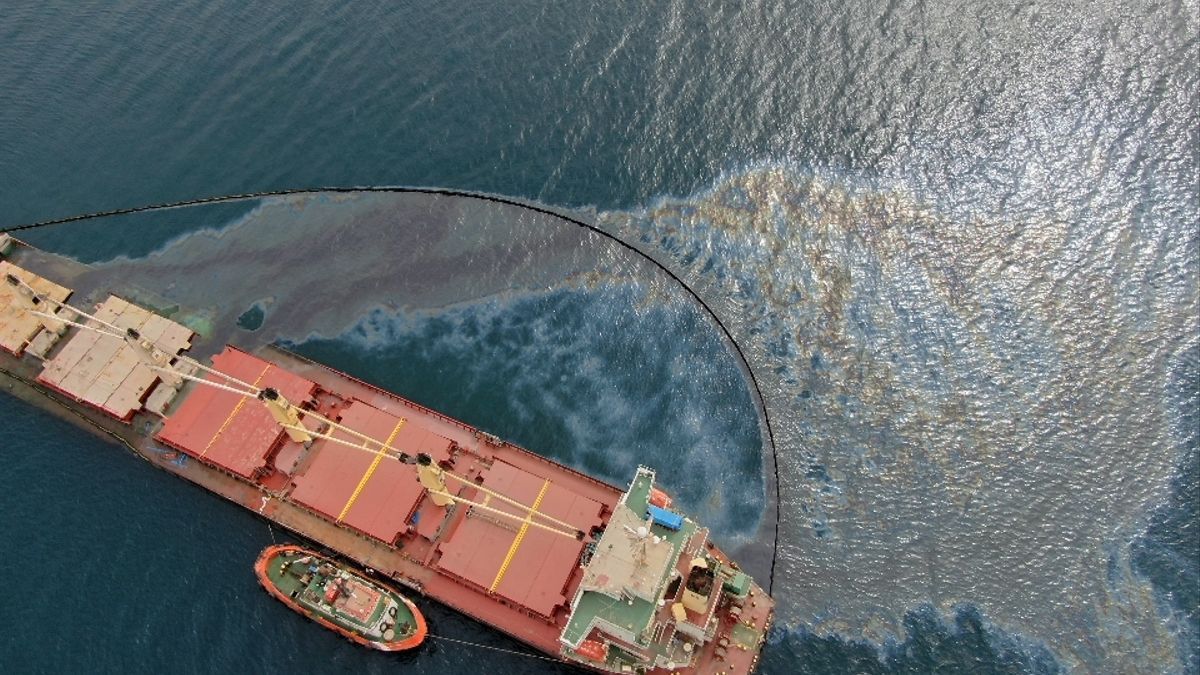
The European Maritime Safety Agency has begun operating a remotely piloted drone in the waters of the Strait of Gibraltar to monitor sulphur and nitrogen emissions from ships crossing the Strait
A strategic site
So far, EMSA's drone has been able to identify a small percentage of ships with pollution levels above the permitted. This is an advantage for ports of destination, which can speed up their procedures by receiving data in advance about a possible infringement.
"The procedure is very agile when it comes to EU ports, as we have an exchange information system on ships where an alert is sent with the details of the measurement," explains Navarro.
But the fact is that the information can reach ports all over the world. Currently, the Strait of Gibraltar is one of the areas with the highest density of marine traffic, which is why EMSA chose it to test the capacity and potential of its drones. Among the other reasons, according to Navarro, are the following:
- The proximity of this traffic to the coast. "It takes us very little time to get to where the ships are, so we can make a high number of measurements with less effort than in other areas," he explains.
- A significant percentage of the vessels sailing in the Strait are bound for European ports, which makes it easier to report non-compliance and follow up.
- This is a point where not only emission measurements, but also maritime surveillance tasks, are carried out. This allows the full capabilities of the drone to be tested.
In addition, according to Navarro, local authorities have requested that pollution control and monitoring systems be improved. "There is a lot of awareness and sensitisation on this issue," he says.
Emissions monitoring drones from the Baltic to the Black Sea
EMSA’s remotely piloted aircraft can operate in all seas surrounding the European Union. Programmes currently cover the Baltic Sea (with bases in Denmark, Sweden, Estonia and Latvia), the Black Sea, Iceland and the English Channel. The objectives of these programmes vary according to the needs of each area, but generally revolve around pollution control and safety.
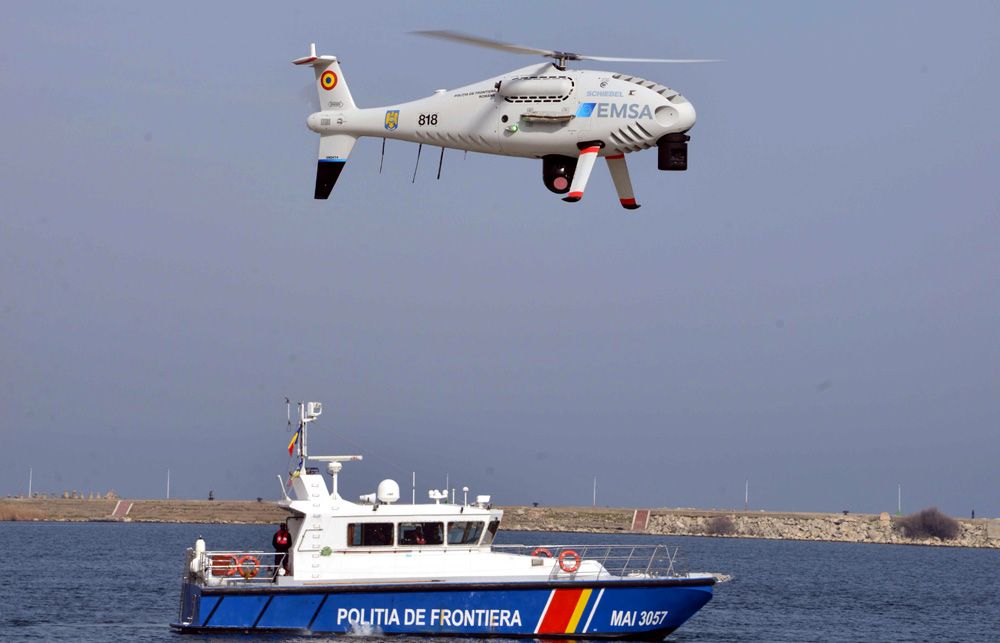
There are similar initiatives, which focus on the use of drones in the port environment. A good example is that of the port of Antwerp. As indicated by the World Ports Sustainability Program, around 100 oil spills occur in its terminals every year. Some are small, but others have a major impact on the environment and on the port activities themselves.
To detect them quickly, the port has started using drones which fly over its space 12 times a day (the number is expected to increase by 2023) equipped with visual and thermal cameras. So far, the results of incorporating these drones in the port are positive, and the entity is already studying the possibility of adding new applications.



